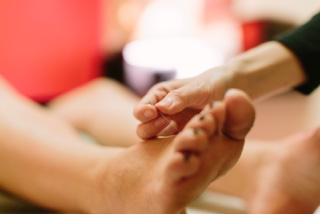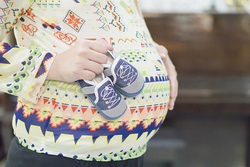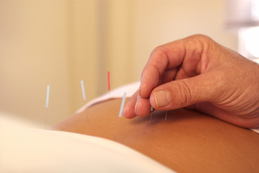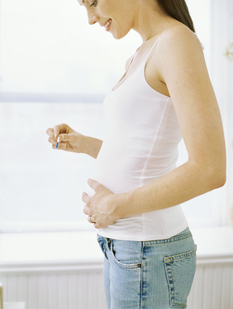Perimenopause is defined as the length of time between the reproductive years and menopause. Pretty vague, huh? The symptoms, however, are quite well-defined. Hot flashes, night sweats, forgetfulness, anxiety and/or depression, weight gain and even migraines can all happen during this period of time. Periods often become irregular and very heavy. Perimenopause can last anywhere from 3.5 to 14 years, so if a woman’s symptoms are pronounced, it can greatly interfere with normal daily activities. If you are one of the unlucky few whose symptoms last upwards of 14 years, finding a treatment that can provide natural relief from perimenopausal symptoms is crucial. Recent research shows that the earlier these symptoms begin, the longer they tend to last (source).
A common misconception about perimenopause is Read more


 Acupuncture during the third trimester of pregnancy can safely be used to treat aches and pains, digestive discomforts and swelling, in addition to two things unique to the third trimester.
Acupuncture during the third trimester of pregnancy can safely be used to treat aches and pains, digestive discomforts and swelling, in addition to two things unique to the third trimester. At this point in pregnancy, most women feel they’ve cleared a hurdle and begin to feel like themselves again. Morning sickness can persist but generally becomes less intense, and energy level also improves. A few new issues may pop up during the second trimester that acupuncture can help a lot with. Migraines and headaches, common in pregnancy, respond beautifully to acupuncture treatment. Usually, once weekly sessions is enough to keep them completely at bay. Some women begin to experience nasal congestion as well. My favorite way to quickly get rid of this is to needle a point called “bitong”- there is one point on each side of the nose, where the edge of the nostril meets the face. It is reliable for draining congestion from the sinuses.
At this point in pregnancy, most women feel they’ve cleared a hurdle and begin to feel like themselves again. Morning sickness can persist but generally becomes less intense, and energy level also improves. A few new issues may pop up during the second trimester that acupuncture can help a lot with. Migraines and headaches, common in pregnancy, respond beautifully to acupuncture treatment. Usually, once weekly sessions is enough to keep them completely at bay. Some women begin to experience nasal congestion as well. My favorite way to quickly get rid of this is to needle a point called “bitong”- there is one point on each side of the nose, where the edge of the nostril meets the face. It is reliable for draining congestion from the sinuses.  I’m excited to give you the first in a series of posts about how acupuncture can help women have an easier, healthier pregnancy. The series will be divided by trimester and which issues acupuncture can address in each.
I’m excited to give you the first in a series of posts about how acupuncture can help women have an easier, healthier pregnancy. The series will be divided by trimester and which issues acupuncture can address in each. Acupuncture is a safe, effective method of treating pain and soreness from athletic endeavors. In my office I most frequently see things like plantar fasciitis and IT Band pain, but have also successfully treated shin splints and aided patients recovering from surgeries such as ACL reconstruction. Thermal imaging has shown acupuncture decreases inflammation, doppler ultrasound shows that it increases blood flow to needled areas, and neuroimaging studies show that it decreases brain activity involved in registering pain and increases brain activity involved in healing. I love treating sports injuries because patients are able to see results from the treatments so quickly and are able to stay active and pain-free. Studies have also found that
Acupuncture is a safe, effective method of treating pain and soreness from athletic endeavors. In my office I most frequently see things like plantar fasciitis and IT Band pain, but have also successfully treated shin splints and aided patients recovering from surgeries such as ACL reconstruction. Thermal imaging has shown acupuncture decreases inflammation, doppler ultrasound shows that it increases blood flow to needled areas, and neuroimaging studies show that it decreases brain activity involved in registering pain and increases brain activity involved in healing. I love treating sports injuries because patients are able to see results from the treatments so quickly and are able to stay active and pain-free. Studies have also found that